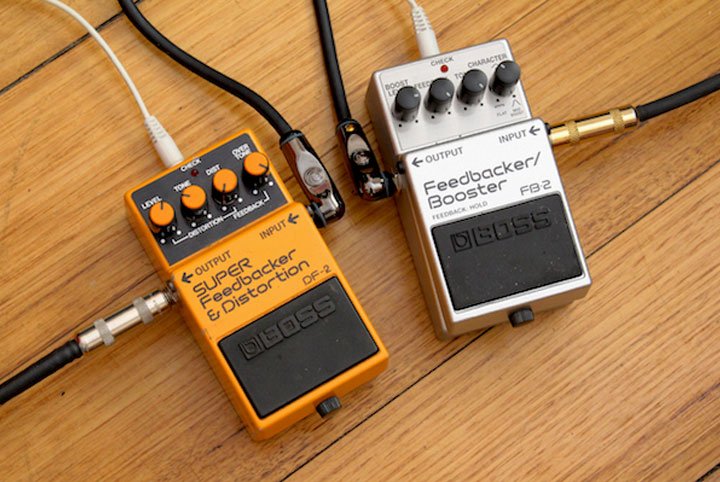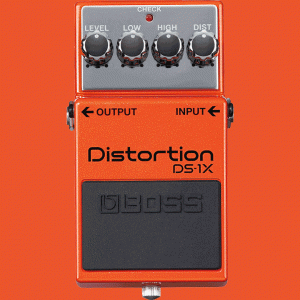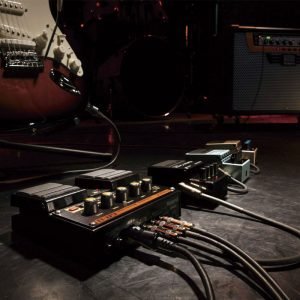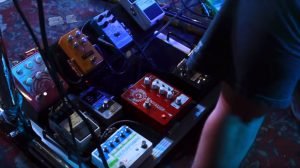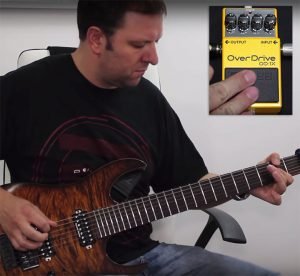Feedback Frenzy: Comparing The BOSS DF-2 And FB-2
Feedback is fun. Feedback is really fun. But in order to generate it and control it you need a perfect combination of a couple of key elements. For starters you need volume, and that can present certain challenges in the home environment. Secondly you need a feedback-friendly environment. You may be able to coax feedback out of your amp at just the right volume but there are all sorts of sweet spots in a room or on a stage where you’ll find different harmonic overtones. The one you’re standing it could just plain be wrong for the guitar, the amp, the key of the song you’re playing. Get those two elements wrong and you’re in trouble. Nobody wants to have neighbours bashing down their door at 2am complaining that their rendition of “Flying In A Blue Dream” is a little iffy, right?
By I Heart Guitar
BOSS initially sought to give players some control over their ability to generate feedback – and their ability to do so with some kind of musical intent – back in September 1984 with the DF-2 Super Distortion & Feedbacker pedal. The idea was to provide a flexible distortion circuit (in this case similar to the venerable BOSS DS-1 Distortion) with the added coolness of a simulated feedback sound which you could introduce by holding the pedal down. The pedal would detect the pitch of the note you were playing and then introduce a harmonic of that note with infinite sustain. The Overtone knob gave you some flexibility in governing exactly which harmonic overtone was summoned forth, which the distortion part of the unit offered the same Level, Tone and Distortion controls as the DS-1.
The DF-2 was a very cool pedal which certainly fulfilled a need for players at the time, especially in giving shredders a flashy way to kick off an intro or end a solo. But there were a few problems. For starters, the tone that was generated was very synthetic in nature, with a slight but very even wavering vibrato effect that kind of took the listener out of the moment. And if you happened to step on the pedal at precisely the wrong moment you’d end up with a repeating ‘click-thunk, click-thunk, click-thunk’ sound which probably has its uses in industrial rock but is not necessarily conducive to Jimi-style controlled feedback squeals.
 But then again, this character is part of what gave the DF-2 its charm. Hold down the switch and the feedback tone will sing out as a drone while you’re free to play over the top of it, for example. Or play a busy riff while stepping on the switch at random points to generate what effectively sounds like a keyboard player backing you up in realtime.
But then again, this character is part of what gave the DF-2 its charm. Hold down the switch and the feedback tone will sing out as a drone while you’re free to play over the top of it, for example. Or play a busy riff while stepping on the switch at random points to generate what effectively sounds like a keyboard player backing you up in realtime.
BOSS changed the name of the DF-2 to the Super Feedback and Distortion only a few months into its existence, after it was realised that DiMarzio had already registered the name Super Distortion for a pickup. But the pedal lived on for nearly a decade.
The BOSS FB-2 Feedbacker/Booster, released in late 2011, takes the general idea of the venerable DF-2 and reimagines it with modern functionality in mind. Guitarists these days tend to exercise a lot more control over their distortion tone, perhaps using a combination of amp gain and booster pedal for instance. So instead of providing an ‘always on’ distortion circuit like the DF-2, the FB-2 gives you a boost circuit which you can set flat for a transparent tone (if, say, you’re perfectly happy with the sound coming from your amp but you want to add feedback to it when the mood strikes). Or you can use it to shape your sound pretty drastically, with the Character control giving you a quite sizeable midrange boost that sounds a lot like a cocked wah-wah pedal. And the boost itself is plenty powerful enough to send a tube preamp from overdrive in to full-on distortion, or from distortion into ultra saturation. There’s also a Tone control which lets you further shape the character of the sound, and can dial out some of the harshness of a high Character setting, or inject some clarity into a flatter sound.
But unlike the DF-2, the FB-2’s feedback capability is hugely enhanced. Now when you hold a note you can whammy, vibrato, hammer, bend, trill and flutter away to your heart’s content and the ‘feedbacked’ tone will perform accordingly. Low settings of the Feedback control give you a naturalistic, amp-like feedback, while more extreme settings tap into the same ‘sustain and harmonic overload’ vibe of a magnetic sustainer pickup. Throw on some delay, roll back the distortion and you’ve got a haunting, lyrical and unearthly tone that is simply not possible with the DF-2.
The DF-2 will always have its fans, and it’s a great pedal for indie players looking for an unusual texture (especially when you hold it down and play over the sustained note) but the FB-2, which is available now, really takes the concept to the next level. When you play it you tend to forget you’re even using a pedal, because unlike the DF-2 you don’t have to play ‘around’ the feedback. Instead you can play with it. I guess in a way you could say that the FB-2 achieves what the DF-2 set out to do back in the 80s: it hands control of feedback over to the guitarist.

